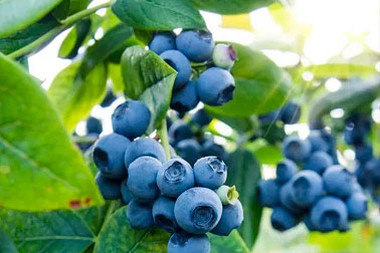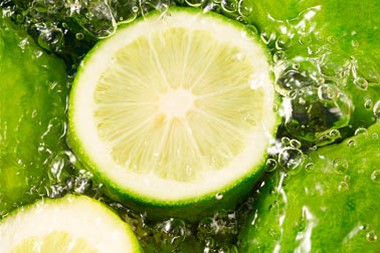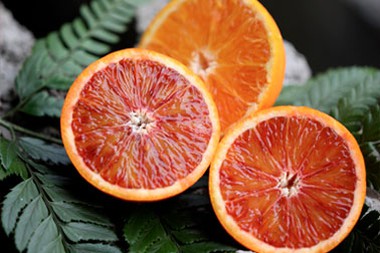Understanding the Distinction Between Garlic and Aged Garlic Powder
Introduction:
Garlic, a popular herb and spice, has been used for centuries due to its distinct flavor and potential health benefits. However, a variation known as Aged Garlic (AGP) has gained attention in recent years. In this article, we will explore the differences between garlic and AGP, including their production methods, chemical composition, health benefits, and culinary applications.
1. Production Methods:
- Garlic: Garlic refers to the fresh bulb of the plant Allium sativum. It is typically harvested and used in its raw or cooked form.
- Aged Garlic: AGP is created by a unique process involving raw garlic that is sliced and then stored at controlled temperatures for an extended period. The aging process can range from several months to years, during which the garlic undergoes natural enzymatic changes.
2. Chemical Composition:
- Garlic: Fresh garlic contains various organic compounds, including allicin, alliin, and sulfur compounds. Allicin is responsible for the pungent odor and some potential health benefits.
- Aged Garlic: The aging process transforms allicin into a compound called S-allyl cysteine (SAC). AGP contains higher levels of SAC compared to fresh garlic. Additionally, AGP has reduced levels of sulfur compounds, resulting in a milder taste and odor.
3. Health Benefits:
- Garlic: Garlic has been associated with numerous potential health benefits, including cardiovascular support, immune system enhancement, and anti-inflammatory properties. However, the research on garlic's health effects is ongoing and requires further investigation.
- Aged Garlic Powder: AGP retains some of the potential health benefits of fresh garlic while offering additional advantages. Studies suggest that AGP may have enhanced antioxidant properties, which can protect against oxidative stress and cellular damage. AGP has also been linked to potential cardiovascular benefits, such as reducing blood pressure and improving lipid profiles.
4. Culinary Applications:
- Garlic: Fresh garlic is widely used in cooking to add flavor to various dishes. It can be chopped, minced, crushed, or roasted and used in marinades, sauces, soups, and stir-fries.
- Aged Garlic: AGP is often used as a convenient alternative to fresh garlic. It provides a milder, sweeter taste and can be easily incorporated into recipes. AGP is commonly used in spice blends, seasoning mixes, and as a seasoning for roasted vegetables, meats, and dressings.
5. Storing and Shelf Life:
- Garlic: Fresh garlic bulbs should be stored in a cool, dark, and dry place. The shelf life of fresh garlic is typically a few weeks to a couple of months, depending on the storage conditions.
- Aged Garlic: AGP has a significantly longer shelf life compared to fresh garlic. When stored in a cool, dry place, AGP can remain usable for several years.
Conclusion:
Garlic and Aged Garlic offer distinct characteristics and applications. Fresh garlic is appreciated for its pungent flavor, while AGP provides a milder taste with enhanced shelf life. Both forms of garlic possess potential health benefits, although AGP's aging process results in altered chemical composition and potentially additional advantages. Whether you choose fresh garlic or AGP, incorporating garlic into your culinary endeavors can add delightful flavors and potential health benefits to your meals.

Is Aged Garlic Antibacterial?
Garlic has been used for centuries in various cultures for its medicinal properties and culinary uses. In recent years, aged garlic has gained attention for its potential health benefits. Among its many claimed properties, one question that arises is whether aged garlic is antibacterial. In this article, we will explore the scientific evidence surrounding the antibacterial properties of Aged Garlic and its potential applications.
To understand the antibacterial effects of Aged Garlic, it is important to first examine its composition. Aged Garlic is produced by allowing raw garlic to undergo a natural aging process. During this process, the garlic cloves are stored at a controlled temperature and humidity for an extended period, usually several months. This aging process leads to chemical changes in the garlic, resulting in the formation of new compounds.
One of the most well-known compounds found in it is allicin. Allicin is a sulfur-containing compound that is responsible for the pungent smell and taste of fresh garlic. However, during the aging process, allicin undergoes further chemical reactions and transforms into other compounds, such as S-allylcysteine (SAC) and various organosulfur compounds. These compounds are believed to contribute to the potential health benefits of it.
Studies have shown that aged garlic extract (AGE) exhibits antimicrobial activity against a wide range of bacteria. Research conducted in vitro has demonstrated that aged garlic extract can inhibit the growth of both Gram-positive and Gram-negative bacteria. Some of the bacterial strains tested include Staphylococcus aureus, Escherichia coli, Salmonella typhimurium, and Helicobacter pylori, among others.
The antibacterial effects of it are believed to be attributed to multiple mechanisms. Firstly, aged garlic extract has been shown to disrupt the cell membranes of bacteria, leading to their death. Additionally, it has been suggested that aged garlic compounds can interfere with bacterial metabolism and inhibit the production of certain enzymes necessary for their survival and growth. These combined effects contribute to the antibacterial activity of aged garlic.
Furthermore, aged garlic has also been investigated for its potential role in combating antibiotic-resistant bacteria, also known as superbugs. The emergence of antibiotic resistance has become a global health concern, and alternative strategies are being explored to address this issue. Some studies have indicated that aged garlic extract may enhance the efficacy of antibiotics against resistant bacteria, making it a promising adjunct therapy.
In addition to its antibacterial properties, it has been associated with various other health benefits. It has been studied for its potential cardiovascular benefits, such as reducing blood pressure and improving cholesterol levels. Aged garlic extract has also shown antioxidant and anti-inflammatory effects, which may contribute to its overall health-promoting properties.
It is important to note that while there is scientific evidence supporting the antibacterial effects of aged garlic, more research is needed to fully understand its mechanism of action and determine the optimal dosage for specific bacterial strains. Furthermore, the efficacy of aged garlic may vary depending on the formulation and preparation methods.
In conclusion, aged garlic extract has demonstrated antibacterial activity against a broad range of bacteria. The compounds formed during the aging process are believed to contribute to its antimicrobial effects. While more research is needed, aged garlic extract shows promise as a natural alternative for combating bacterial infections and addressing the issue of antibiotic resistance. However, it is always advisable to consult with a healthcare professional before using any natural remedies or supplements for therapeutic purposes.
Can You Cook with Aged Garlic?
Garlic is a versatile and flavorful ingredient used in various culinary traditions around the world. While most people are familiar with fresh garlic, aged garlic has also gained popularity in recent years. Aged garlic is prepared by allowing fresh garlic bulbs to undergo a natural aging process, typically lasting several weeks to months. This process results in changes in the garlic's flavor, aroma, and texture, making it a unique ingredient in the culinary world. In this article, we will explore the use of aged garlic in cooking, its benefits, and some delicious recipes that showcase its distinctive qualities.
Aged garlic is known for its mellow and sweet flavor compared to fresh garlic. The aging process reduces the pungent and sharp characteristics commonly associated with fresh garlic, making it more palatable for those who find the raw taste overpowering. The flavor profile of aged garlic is often described as nutty, earthy, and slightly sweet, which adds depth and complexity to a variety of dishes.
When it comes to cooking with it, there are numerous possibilities. Its unique flavor can enhance a wide range of recipes, including soups, sauces, marinades, stir-fries, and more. it can be used in both cooked and raw applications, depending on the desired flavor profile. While it may not have the same strong aroma as fresh garlic, it still provides a delightful taste that can elevate any dish.
One of the significant advantages of using it in cooking is its potential health benefits. Garlic has long been recognized for its medicinal properties, such as its potential to support cardiovascular health, boost the immune system, and reduce inflammation. While research on it specifically is limited, some studies suggest that the aging process may enhance the bioavailability of certain beneficial compounds, such as antioxidants and organosulfur compounds found in garlic. These compounds are believed to contribute to garlic's potential health-promoting effects.
Now, let's explore some delicious recipes that showcase the unique qualities of aged garlic:
1. Aged Garlic Butter Shrimp:
- In a skillet, melt butter over medium heat.
- Add minced aged garlic and sauté until fragrant.
- Add peeled and deveined shrimp, and cook until pink and opaque.
- Season with salt, pepper, and a squeeze of lemon juice.
- Serve with crusty bread or over pasta for a delightful meal.
2. Roasted Vegetables with Aged Garlic:
- Preheat the oven to 400°F (200°C).
- Toss your favorite vegetables (such as carrots, potatoes, and Brussels sprouts) with olive oil, salt, and pepper.
- Add minced aged garlic and mix well to coat the vegetables.
- Spread the vegetables in a single layer on a baking sheet and roast for 25-30 minutes or until golden and tender.
- Serve as a flavorful side dish or add them to salads or grain bowls.
3. Aged Garlic and Herb Salad Dressing:
- In a blender, combine aged garlic cloves, fresh herbs (such as basil, parsley, and thyme), olive oil, lemon juice, Dijon mustard, and a touch of honey.
- Blend until smooth and creamy.
- Drizzle the dressing over your favorite salad greens, or use it as a marinade for grilled vegetables or meats.
These are just a few examples of how aged garlic can be incorporated into your culinary repertoire. Its unique flavor and potential health benefits make it a valuable addition to any kitchen. Whether you prefer it cooked or raw, aged garlic offers a delightful twist to your favorite dishes.
In conclusion, cooking with it provides an opportunity to explore new flavors and expand your culinary horizons. With its mellow and sweet taste, it can be
used in a variety of dishes to add depth and complexity. Additionally, the potential health benefits associated with garlic make it an appealing ingredient. So, next time you're in the kitchen, consider reaching for some aged garlic and let your taste buds embark on a flavorful journey.
Contact us: selina@ciybio.com.cn



